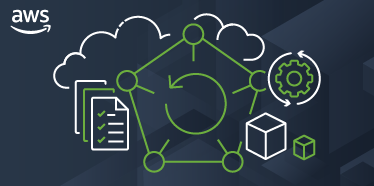AWS Storage Blog
Tag: AWS Cloud Storage
Lower your Amazon S3 backup costs with AWS Backup S3 tiering
Organizations face a critical challenge in data protection: how to retain ever-increasing volumes of backup data for extended periods while maintaining cost efficiency. Regulatory mandates, internal governance policies, and comprehensive disaster recovery strategies often necessitate preserving backups for months or even years. At the same time, the threat landscape continues to evolve, with sophisticated ransomware […]
How TUI modernized their backup strategy with AWS: Driving clarity and scale
TUI, Europe’s leading travel company, operates across 180 holiday destinations with development teams managing diverse Amazon Web Services (AWS) workloads across multiple accounts—from customer-facing applications to internal analytics platforms. The company processes millions of customer transactions daily, necessitating robust systems with reliable data protection and backup capabilities to ensure business continuity. As TUI’s cloud footprint […]
PingCAP increased TiDB Cloud stability using Amazon EBS detailed performance statistics
PingCAP is a global company focused on developing distributed, high-performance, and auto scaling relational databases. Its flagship product, TiDB, is a popular open source databases, and TiDB Cloud, a fully managed Database-as-a-Service (DBaaS) based on TiDB, delivers horizontal scalability, strong consistency, and high availability for high-performance applications. Many PingCAP customers run highly latency-sensitive workloads such […]
Advanced notice: Amazon S3 to disable the use of SSE-C encryption by default for all new buckets and select existing buckets in April 2026
Starting on April 6, 2026, we will be changing how server-side encryption with customer-provided keys (SSE-C) is enabled for Amazon S3 buckets. With this change, SSE-C will be disabled by default on all new S3 general purpose buckets. Furthermore, SSE-C will also be disabled for all existing buckets in Amazon Web Services (AWS) Accounts that […]
Scan backups for malware with Amazon GuardDuty Malware Protection for AWS Backup
Data loss events from malware attacks can compromise your backups, putting your recovery strategy at risk. Organizations rely on backups as a critical defense against data loss, but these same backups can inadvertently preserve malware that has infiltrated production systems without being detected and removed. When malicious events occur, customers face a significant challenge: determining […]
How to use Amazon S3 Multi-Region Access Points to streamline and reduce the cost of writing across AWS Regions
Large global organizations often struggle to efficiently manage data copies across different geographic regions when using distributed object storage services. Although several approaches exist for cross-region data writing, common solutions such as data replication or streaming can be costly and introduce latency issues. Many customers have core services deployed globally across multiple Amazon Web Services […]
Cost-optimized file storage with Amazon FSx for NetApp ONTAP and Komprise
As enterprises pursue digital transformation and smart operations, they’re challenged by the limitations of traditional file systems. Machine-generated data from connected systems and automation has pushed legacy storage solutions beyond their capabilities. In manufacturing, healthcare, logistics, financial services, and other industries, organizations need reliable access to data across globally distributed locations. These organizations face rising […]
Encrypt AWS Backup logically air-gapped vaults with customer-managed keys
Organizations in regulated industries often mandate control over encryption keys when storing data in the cloud to meet compliance requirements. Although AWS Backup logically air-gapped vault provides secure, isolated backup storage, these customers have needed the ability to use their own AWS Key Management Service (AWS KMS) customer-managed keys (CMKs) to provide greater control of […]
Build intelligent ETL pipelines using AWS Model Context Protocol and Amazon Q
Data scientists and engineers spend hours writing complex data pipelines to extract, transform, and load (ETL) data from various sources into their data lakes for data integration and creating unified data models to build business insights. The process involves understanding the source and target systems, discovering schemas, mapping source and target, writing and testing ETL […]
Test and build application resilience using Amazon EBS latency injection
As businesses strive to build highly available applications, they must prevent disruptions that can lead to downtime and revenue loss. Robust monitoring systems help identify failures proactively, but chaos engineering has emerged as a systematic approach to building resilient systems by uncovering potential issues before they become outages. Chaos engineering is especially critical for storage […]





